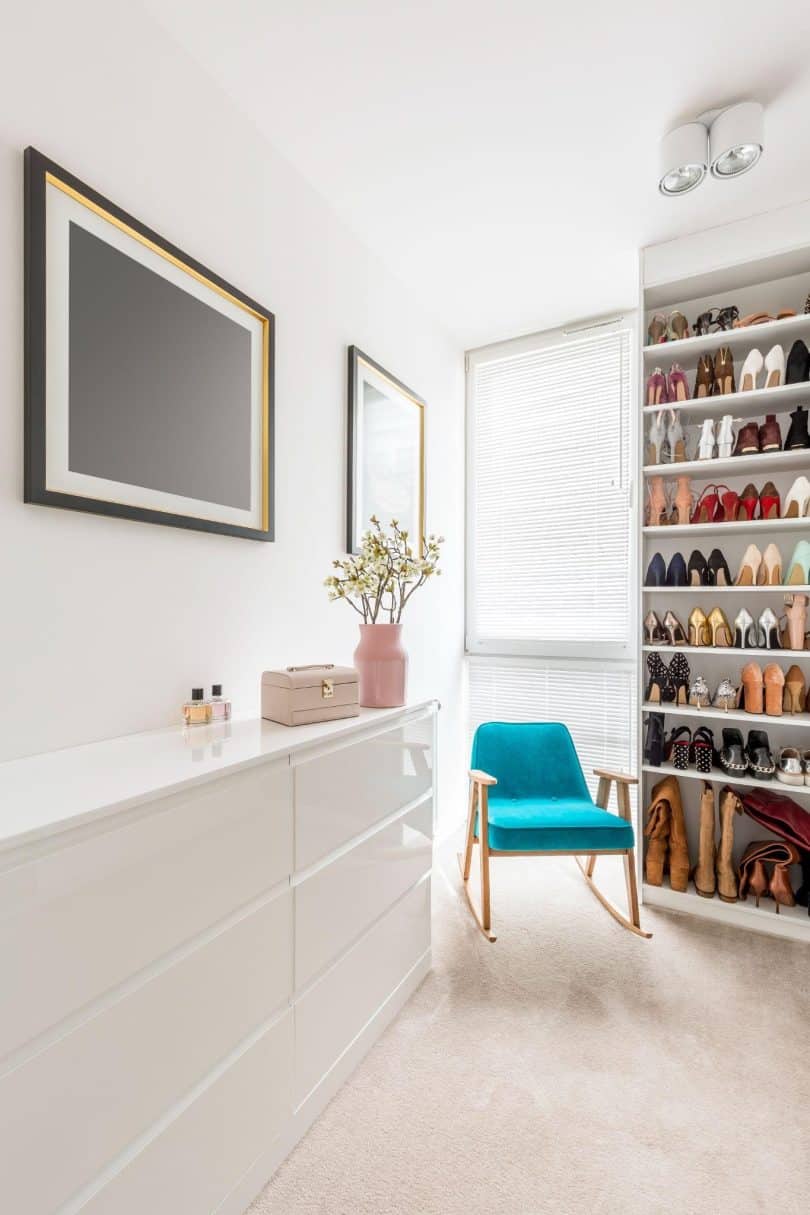Tired of spending all your cash on new clothes each season? Don’t worry. Matt Sommers will give you some fantastic tips in this article. Fashion constantly changes, and keeping up with spending loads is easier. But fear not! These tips will help you look trendy and eco-friendly while saving money.
Contents
Understanding Sustainable Wardrobe
A sustainable wardrobe refers to a collection of clothing items that are fashionable and environmentally friendly. With the increasing concern for the planet, understanding how to build a sustainable wardrobe has become crucial. By making conscious choices regarding fashion, individuals can reduce their carbon footprint and contribute to a more sustainable future.
To create a wardrobe, it is essential to prioritize clothing made from sustainable materials such as organic cotton, hemp, or recycled fabrics. These materials have a lower environmental impact as they require less water and energy to produce. Additionally, opting for timeless and versatile pieces can help minimize the need for constant purchases and reduce waste.
Another important aspect of a sustainable wardrobe is embracing the concept of slow fashion. It involves investing in high-quality garments made to last rather than succumbing to the fast fashion trend of buying cheap, disposable clothing. Slow fashion encourages individuals to value their clothes, repair them when needed, and pass them on to others instead of discarding them.
Benefits of Having a Sustainable Wardrobe
Having a sustainable wardrobe has many perks! Consciously selecting clothing can positively affect the environment, our wallets, and our well-being.
- Lessened environmental impact: Picking sustainable fashion aids in decreasing adverse effects on our planet. Buying quality garments made from eco-friendly materials, like organic cotton or recycled fabrics, helps reduce waste and pollution.
- Money-saving: A sustainable wardrobe may require an upfront cost, but it can save cash in the long run. Durable and timeless pieces are less prone to wear out quickly or become unfashionable, avoiding the need for constant replacements.
- Ethical practices: Supporting brands prioritizing fair labor conditions and ethical production processes is essential for promoting social responsibility. Selecting clothes from companies that uphold high ethical standards demonstrates our commitment to human rights and workers’ well-being.
- Heightened personal style: Sustainable fashion encourages creativity and individuality. Instead of adhering to fleeting trends dictated by fast fashion, a sustainable wardrobe allows us to craft a unique collection of timeless pieces that reflect our tastes and values.
Building a Trendy Closet Without Breaking the Bank
Building a fashionable wardrobe without draining a bank account is a goal many strive for. Here are three essential tips to help you achieve a trendy closet without breaking the bank:
- Opt for Timeless Pieces: Invest in wardrobe staples that never go out of style, such as a well-fitted pair of jeans, a classic blazer, or a little black dress. They can be mixed and matched with trendier pieces to create various looks without constant new purchases.
- Thrift and Swap: Check out secondhand stores, consignment shops, and online platforms for pre-owned clothing. Not only can you find unique and high-quality pieces at a fraction of the cost, but you’ll also be practicing sustainability by giving these items a second life. Additionally, organize clothing swaps with friends to refresh the closet without spending a dime.
- Get Creative with Accessories: Accessories can elevate any outfit, so focus on investing in statement accessories rather than splurging on expensive clothing. Pairing a simple outfit with a stylish handbag, a statement necklace, or a trendy belt can instantly transform the look, making it appear fresh and fashionable.
To build a wardrobe without breaking the bank, it’s important to remember that fashion is not about following every trend but expressing style while being conscious of budget and the environment.
Thrifting for Fashionable Finds
Go on the hunt for hidden gems at thrift stores! You could uncover vintage dresses, designer handbags, and other fashionable finds. Show off creativity with mix-and-match pieces that reflect taste.
Choose thrifting for a sustainable fashion option. It’s budget-friendly, and you can find limited-edition items unavailable in regular shops. Plus, you’ll be helping out local communities when you shop at thrift stores run by non-profit organizations. Get ready to discover the hidden treasures in thrifting!
DIY Clothing Upcycling Techniques
Patchwork is a unique way to get creative with fabric and old clothes. It’ll add visual interest and use up fabric scraps. Stenciling is another excellent option. Using fabric paint and stencils, you can make custom designs on clothes.
You don’t need to spend much on new clothes; unleash creativity and upcycle old items into trendy fashion statements! Plus, by upcycling, you’ll help the environment.
Revamping Old Clothes with Simple Sewing Techniques
Go through your closet and pick out clothes that need a makeover. Get design inspiration from fashion websites or social media. Sketch a plan of the new design for each piece. Use thread that matches the fabric, and experiment with different stitches. When it’s done, make adjustments like tightening threads or adding buttons.
Adding Unique Embellishments to Transform Your Wardrobe
Give your wardrobe a fresh, trendy look without spending a fortune! Here are five ways to add unique details:
- Jewelry: Look for statement pieces or layer delicate necklaces to elevate any outfit instantly. Search thrift shops or online stores for affordable, eye-catching pieces.
- DIY Embroidery: Transform t-shirts or jeans with vibrant flowers or intricate patterns. It adds a personal touch and makes clothes stand out.
- Patchwork: Sew on patches to jeans, jackets, or bags for a unique and quirky style.
- Customized Buttons: Replace plain buttons on cardigans or blouses with exciting shapes, colors, or textures. This small detail can have a significant impact!
- Statement Belts: An eye-catching belt can completely transform a dress or shirt. Look for belts with unique buckles or intricate designs.
These ideas allow you to express style and creativity. Plus, Vogue magazine says upcycling and personalizing clothes is a sustainable fashion trend!
Shopping Mindfully and Ethically
Mindful and ethical shopping involves making conscious choices to support sustainable brands and practices. It ensures that the clothes we buy are produced in an environmentally friendly manner and that workers are treated fairly.
Researching Sustainable Fashion Brands
Researching sustainable fashion brands is critical for conscious consumers. It helps them make intelligent choices and back brands with ethical practices and environmental sustainability.
- Research transparency: See what brands are open about their production methods, materials, and labor conditions.
- Look at certifications: Find brands related to sustainable practices, such as Fair Trade or GOTS (Global Organic Textile Standard).
- Check materials: Note the materials the brand uses. Opt for organic, recycled, or upcycled fabrics.
- Analyze supply chain ethics: Find out how a brand ensures its workers get fair wages and safe conditions throughout the supply chain.
Plus, support local artisans and small businesses that are sustainable. Doing this contributes to ethical fashion and local communities’ growth.
Maintaining and Caring for Your Clothing
Maintaining and preserving the lifespan of garments is essential to maintaining and caring for clothing appropriately. Here are some points to remember:
Always refer to the garment’s care label, which provides specific washing, drying, and ironing guidelines. Different fabrics require different care methods, so adhering to these instructions is crucial to prevent damage.
Store clothing in a cool, dry place away from direct sunlight when not used. Use appropriate hangers or fold items neatly to avoid wrinkles or stretching. Additionally, consider using garment bags or mothballs to protect against pests.
Regularly check for wear and tear, loose threads, or missing buttons. Addressing these issues can prevent further damage and ensure garments remain in top condition.
When washing clothes, opt for gentle or delicate cycles. Avoid using excessive heat or harsh chemicals that can cause fading or deterioration. Additionally, separate garments by color to prevent color bleeding.
Lastly, remember that taking care of clothing is not just about cleanliness but also about preserving the aesthetic and functionality of each piece. By adopting these practices, you can extend the life of the cupboard and enjoy garments for years to come.
Storing and Organizing Your Clothes
To maintain and care for clothes, storing and organizing them is essential. A well-organized closet makes it simpler to find what you need. Plus, it helps to preserve the quality and length of life of clothing. Follow these tips:
- Fold Neatly: Fold clothes before storing. It stops wrinkles and creases. Use the Marie Kondo technique or any folding method that works. It maximizes space and keeps everything tidy.
- Sort by Type: Separate shirts, pants, dresses, etc. It makes getting dressed easier and simpler.
- Storage Solutions: Get storage solutions such as hangers, dividers, cupboard boxes, shoe racks, or storage bins. Utilize vertical space with hooks or hanging organizers. Store accessories like belts, scarves, or jewelry.
Finally, rotate seasonal clothing items based on the weather. Put off-season pieces in garment bags or sealed containers to protect them from dust and damage.







